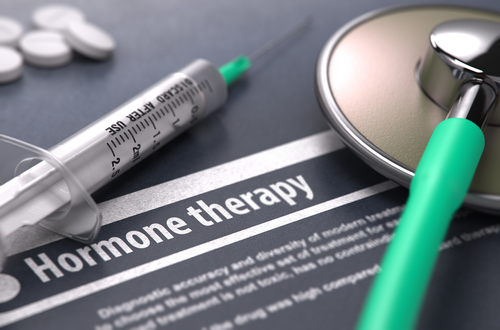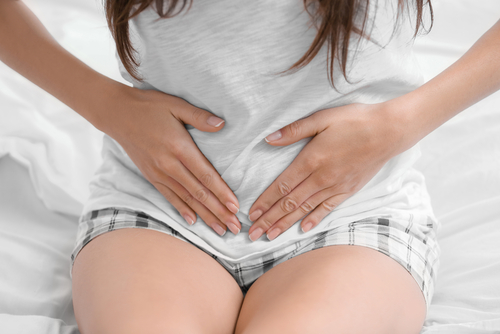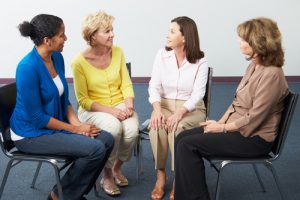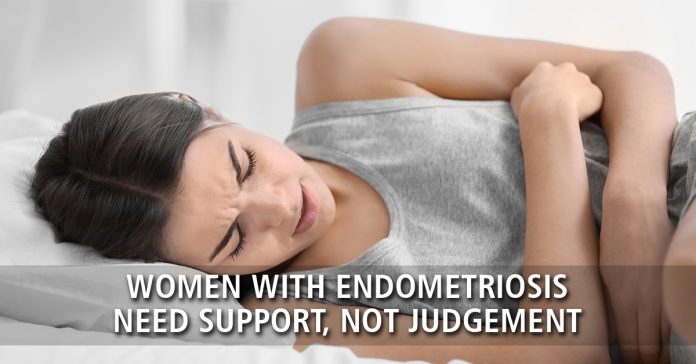One in ten women worldwide is thought to have Endometriosis.
Known for years as “the disease of the career woman”, based on the idea that women without children have developed the disease in their reproductive organs, endometriosis is a painful disease designed to affect one in ten women worldwide.
The condition occurs when tissue similar to the lining of the uterus (i.e., the endometrium) grows outside the uterus. These tissues are implanted in shape and lesions in organs such as the ovaries, bowel, and bladder. Endometriosis can only be diagnosed through surgery and the diagnosis is often delayed because at times people find it hard to believe the symptoms reported by women.

The cause of endometriosis is yet to be known and there is no cure. Treatments include hormone therapy to inhibit the growth of the disease and surgery to remove the lesions, but these often only provide short-term relief. And they have significant side effects, such as loss of bone density and formation of scar tissue that can cause the organs to fuse together.
In the absence of an effective long-term cure and treatment, we need to focus our attention on how physicians and loved ones can provide care and support to women with endometriosis.
“Living with Endometriosis”
Endometriosis affects all areas of women’s lives. Some women educate themselves about endometriosis and as well try to de-stigmatize the discussion of gynecological health with their family, friends and intimate partners.
Some women take it upon themselves to control their symptoms with all the resources they’re available or they have. Some go extra length by changing their diets and some re-organize their work and social commitments.
Economics of Endometriosis
 Endometriosis is an expensive disease. One of the factors contributing to its cost is the delay in diagnosis, which averages five and a half years. On top of that, women are often subjected to treatment and research that are not necessary which costs money.
Endometriosis is an expensive disease. One of the factors contributing to its cost is the delay in diagnosis, which averages five and a half years. On top of that, women are often subjected to treatment and research that are not necessary which costs money.
In a research conducted, women highlighted the harmful influence of endometriosis on their ability to work. They spoke of the difficulty of performing certain tasks when under the influence of strong painkillers.
With symptoms such as severe pelvic pain during menstruation and other times, heavy menstrual bleeding and bowel and bladder problems, including diarrhea and cyclical constipation, it is not surprising that some women with endometriosis have difficulty staying in paid employment.
So, although health care costs are substantial, the loss of income from this chronicle – and, for some, deactivation – condition is estimated at almost double. Calculations would need to cover both absenteeism and reduced productivity when at work.
And many women are uncomfortable with having to explain a gynecological condition to employers, particularly male managers.
The Right Support
 There are some things that can be done to adapt to the symptoms and support women’s economic participation. Women speak of the need for greater flexibility in the workplace, such as the option of working from home and the ability to arrange hours to meet medical appointments.
There are some things that can be done to adapt to the symptoms and support women’s economic participation. Women speak of the need for greater flexibility in the workplace, such as the option of working from home and the ability to arrange hours to meet medical appointments.
Although the idea of changing social practices to improve the well-being and as well health of women with endometriosis may not have the glamour of an imaging technique or new drug, they are timely and reasonable measures that women with endometriosis have identified as valuable.
Research into finding an effective long-term cure or treatment for endometriosis is important, but it should not be our only goal. Rather, we must work together to create an environment that fosters women’s agency in the face of this chronic disease.
Seven Ways to Treat Endometriosis
- Establishing a Birth Control Regime
Because symptoms tend to increase during or near your period, one of the ways to treat endometriosis is to establish a birth control regimen that works for you. Your doctor may even direct you to maintain a birth control continuously or for longer lengths of time, skipping regular monthly periods, so work with him or her to develop the plan. Depending on the specific characteristics of your condition, other types of hormonal treatments may also be considered, along with surgical options.
- Limit Pain Shooting: Food
Certain foods are known to exacerbate the symptoms of endometriosis, often limiting or avoiding them may help. While completely eliminating all forms of dairy and gluten triggers, some women have definitely found relief by stopping eating bread, pasta, red meat or milk. Of course, there are a number of other foods that can also increase symptoms, such as sugar, caffeine, and alcohol, so be sure to talk to your doctor for complete information about these and other foods that may affect you. Your doctor can also give you better advice on how to replace the nutrients you may lack by eliminating certain foods.
- Eating Healthy
Just as there are certain foods you may want to limit or avoid, there are also many others that may actually help minimize symptoms. Increasing consumption of fibrous fruits, vegetables, beans, gluten-free whole grains, seeds, and nuts has been known to help, along with consumption of omega-3 rich fish such as trout and salmon.
- Stay Hydrated
In addition to avoiding the pain-killing foods and eating healthy, drink plenty of water and stay hydrated. To this day, it is by far one of the simplest and most effective solutions to facilitate digestion, which minimizes colic and makes you feel healthy.
- Exercise regularly
Just as it is known to help minimize seasonal cramping, exercise is also a great way to reduce the pain of endometriosis. Taking a yoga class or going for a run are great ideas, like just taking a walk. Together you will relieve your symptoms; an exercise routine can also help improve your overall health.
- Search for Comfort
When you are suffering from pain and cramping, using a hot pad or taking a hot bath can sometimes help. While there are opinions about the effectiveness of treatment methods, some women also report getting relief with massage and acupuncture.
Get Support
In addition to seeking support from close family members and friends, you may also want to consider joining a local or online support group that allows you to connect with others who are going through the same thing. So difficult that endometriosis can be, it is also very helpful to know that you are certainly not alone.
In general, the more you know about endometriosis, the more control you will have. Your doctor is, of course, a great resource, along with the online sources. As mentioned earlier, just remember that what works for someone else may not work or even be safe for you, so be sure to check the effectiveness of the suggested tips, including all the ones mentioned here, with a healthcare professional.
Source: theconversation.com






